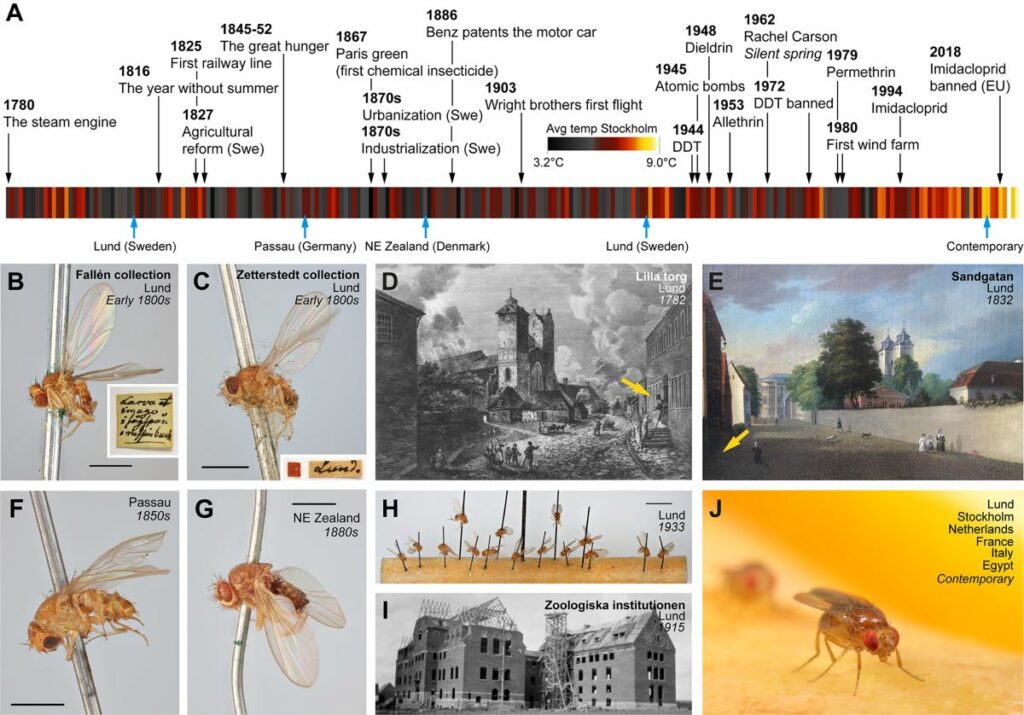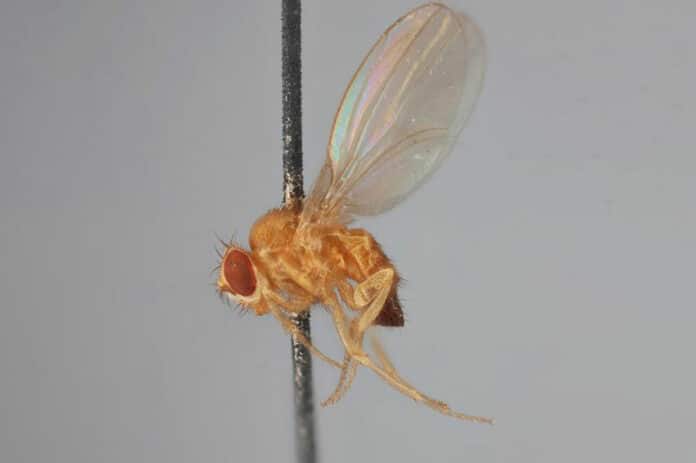One species that has been researched the most extensively globally is the common fruit fly, Drosophila melanogaster. A new study documents evolution over thousands of generations, encompassing the periods that contain the species’ initial settlement of northern Europe and an era of rapidly expanding human activity, by comparing historical samples from the early 1800s to 1933 against contemporary genomes.
New avenues for evolutionary research are being opened by the ability to perform genome sequencing on long-dead organisms. These possibilities are particularly noteworthy regarding museum collections, where many documented specimens may suddenly be acceptable for genetic investigation.
No previous study has investigated genome-scale variation from historical D. melanogaster specimens nor any species of such a minute animal.
In a new study published in PLoS Biology, scientists obtain and analyze genomes from historical D. melanogaster specimens of approximately 100 to 200 years of age. For this, they used minimally destructive techniques.
Scientists noted, “The roughly 200-year time frame of our analysis should encompass the earliest stages of this ancestrally tropical species’ adaptation to a novel high latitude environment, along with profound human-mediated changes to the environment of this commensal species. Hence, this study of European D. melanogaster offers the potential to reveal both demographic and adaptive changes during this dynamic time interval against the backdrop of a well-annotated genome with detailed knowledge of gene function.”
Scientists found 25 newly sequenced genomes from museum specimens of the model organism Drosophila melanogaster, including the oldest extant examples of this species. They also find that the Lund, Sweden population underwent local genetic differentiation during the early 1800s to 1933 interval (potentially due to drift in a small population) but became more similar to other European people after that (potentially due to increased migration).

Scientists said, “There would have been a vast increase in fruit shipping between the 1930s and the present and, generally, more human transport that probably increased opportunities for longer distance Drosophila migration. So, what we think we are seeing between the 1930s and the present is the effect of that migration homogenizing genetic variation.”
Differences between DNA from 1930s specimens and their present-day kin revealed the emergence of a gene called Cyp6g1 that’s known now to make the flies more resistant to the pesticide DDT.
The 1940s, when the study’s most recent museum sources of Drosophila were still in the air, would be at that time. Before that, significant genetic changes reveal that the Ahcy gene helped 19th-century flies adapt to Sweden’s (and other high-latitude homes) lower temperatures and shorter days, which were crucial for the flies’ reproductive cycles.
DNA from museum flies collected in the 1800s revealed that the gene for ChKov1, which was previously considered to be associated with pesticides, actually originated before the relevant insecticides were even created. A previous study by other scientists revealed that ChKov1 also imparted resistance to the sigma virus, which is thought to have first been discovered in flies over 200 years ago.
Journal Reference:
- Shpak M, Ghanavi HR, Lange JD, Pool JE, Stensmyr MC (2023) Genomes from historical Drosophila melanogaster specimens illuminate adaptive and demographic changes across more than 200 years of evolution. PLoS Biol 21(10): e3002333. DOI: 10.1371/journal.pbio.3002333
